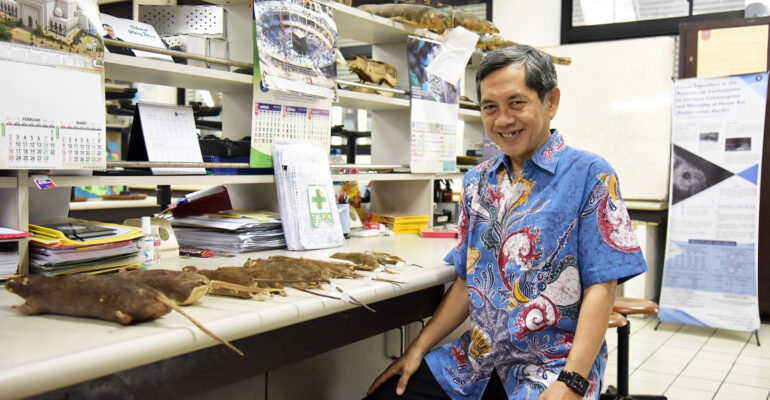Expert from IPB University: Floods Increase Leptospirosis Risk, Residents Urged to Stay Alert

Flooding in vulnerable areas often has broader impacts, including threats to public health. Dr Swastiko Priyambodo, an expert from IPB University, warns that floods in flood-prone regions can elevate the risk of leptospirosis.
This disease is caused by the leptospira bacteria, which spreads through rat urine and can enter the human body through wounds or mucous membranes.
“This situation becomes more dangerous because the symptoms are often nonspecific and can resemble other illnesses, necessitating heightened vigilance from the public,” he stated.
According to Dr Swastiko, several rats in human settlements, including the brown rat (Rattus norvegicus), the house rat (Rattus tanezumi), and the house mouse (Mus musculus), contribute to the spread of leptospirosis.
Additionally, the brown rat (Rattus norvegicus) and the rice field rat (Rattus argentiventer) in flooded rice fields are two main species that tend to play in water, especially in frequently inundated areas.
“When flooding occurs, rat urine containing leptospira mixes with floodwater, increasing the risk of infection for humans exposed, particularly if they have open wounds or direct contact with contaminated water,” he explained.
As a Rodent expert, Dr Swastiko added that leptospirosis can develop into a serious condition if not addressed promptly. Early symptoms include high fever, chills, headache, muscle pain, nausea, vomiting, and red eyes.
“In more severe cases, this infection can lead to complications in the kidneys, liver, or respiratory system, which can ultimately result in death. The public should seek medical attention immediately if they experience these symptoms, especially after exposure to floodwater,” he advised.
This Expert on Vertebrate Pests from IPB University also emphasized the importance of controlling rat populations as a primary measure to prevent the spread of leptospirosis.
He further elaborated that this control method should be implemented in an integrated manner with five main strategies:
- Sanitation – Maintaining environmental cleanliness by ensuring there are no open food sources and reducing rat breeding sites.
- Technical culture – Implementing agricultural practices that can inhibit rat reproduction, particularly in farming and plantation sectors.
- Mechanical control – Using traps or rat glue, barriers, and rat deterrents to capture and reduce rat populations in residential areas.
- Biological control – Utilizing natural predators like owls in agricultural areas to naturally suppress rat populations.
- Chemical control – Using tested rat poisons that meet safety standards.
Additionally, he urged the public to use protective gear when engaging in activities in flood-affected areas. Wearing boots, gloves, and covered clothing is highly recommended to avoid direct contact with potentially contaminated water.
“Every case found must be addressed immediately to prevent it from developing into a wider outbreak. Control measures must be consistently implemented, including monitoring rat populations in flood-prone areas,” he concluded. (IAAS/RWA)



